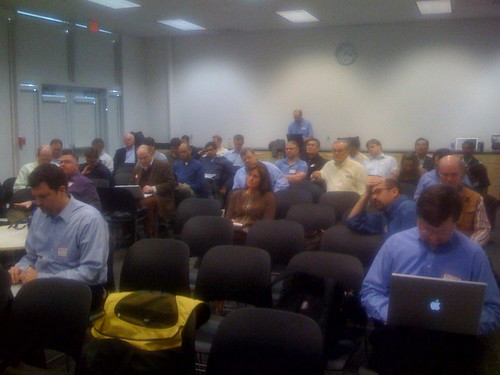As some of you are no doubt aware, David Berlind, Dave Nielsen and myself collected some of the best and brightest in the cloud computing industry yesterday to look at what I consider to be a crucial question for the future of the industry: how do we protect customers from being locked in to platforms over which they have little or no control?
The short answer, as my panelists this morning at the Cloud Connect event and I agreed, is that you don’t. As with any technology – cloud or on-prem – a certain degree of lock-in is borderline inevitable. Open source, as was discussed yesterday, can help, but it is no panacea. Protecting your technical investments, both now and in future, is and will remain more aspirational than achievable end.
All of that said, it seems clear that the cloud providers could – and likely should, to boost adoption – be more actively and aggressively considering principles of interoperability, nascent though the market and the offerings that serve it may be. While it is unlikely, and not at all desirable, that we’ll see the cloud offerings homogenized to the extent that they become seamlessly interchangeable, intelligent customers will invest in roach motel platforms only as a last resort.
The discussion we brokered yesterday confirmed at least that much for me; how and where we go from there remains to be seen, and will depend on the energy, activity and interest of the various discussion participants. Yours too, if you’re so inclined. Dave, David and myself will be spinning up shortly a wiki and mailing list for the purposes of continuing the discussion from Mountain View, with an eye towards advancing the cause of interoperability and preventing a repeat of past history. In addition to recruiting all of the dedicated participants from yesterday’s session, we’ll be looking for assistance in several tasks, including:
- The refinement of a cloud computing taxonomy
- The matching of existing technologies, standards and standards organization to the taxonomy components
- The assessment of gaps in the existing standards and technologies: what will have to be done from scratch
Much of the determination as to whether or not yesterday’s event constitutes a success or failure has yet to be determined: as Rich Miller of Replicate Technologies put it, “Its destiny lies in the good intentions and clarity of vision of the participants.” Truer words, and all that.
But while we await to see what progress can be made, I must say that I was personally heartened by not only the attendance and participation, but by the realization – extracted from the initial introductions – that there everyone there has much more in common than not. Of course there are differences of opinions – that much alone was apparent during the subsequent debate on terminology. But there is a great deal of common ground to work from, both in the realization of the shared barriers to entry and the potential rewards should they be addressed.
Thus I consider the event a success, and I’d like to thank everyone who made it possible: the attendees, first and foremost, as well as our Cloud Camp and Eclipse sponsors, Marcia Chappell who handled the logistics from our end, and of course David Berlind and Dave Nielsen.
There’s a long way to go before we see interoperable clouds, but each step represents progress. Incremental progress to declare victory, remember.

